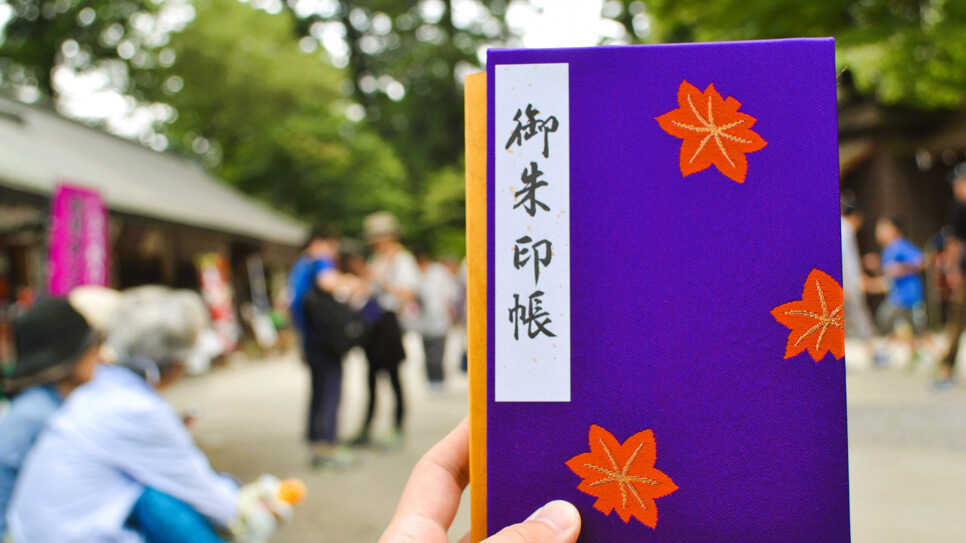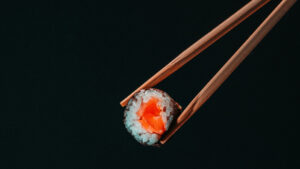In recent years, goshuin—sacred stamps received at shrines and temples—have been gaining popularity among young people and international travelers.
A goshuin serves not only as a record of worship, but also as a meaningful keepsake of your journey.
To collect these stamps, people use a special notebook called a goshuincho, which comes in various styles and requires some basic etiquette and knowledge to use properly.
If you’re thinking about starting your own goshuin journey, this guide will help you prepare and enjoy the experience with confidence.
Contents
- 1 Origin and History of the Goshuincho
- 2 What’s the Difference Between Goshuin and a Goshuincho?
- 3 Who Should Try Using a Goshuincho? The Appeal of Collecting Goshuin
- 4 How to Receive a Goshuin: Steps and Etiquette
- 5 Things to Keep in Mind When Using a Goshuincho
- 6 Things You Should Avoid When Collecting Goshuin
- 7 Where Can You Buy a Goshuincho? A Guide to Purchase Locations
- 8 How to Choose a Goshuincho
- 9 Types and Meanings of Goshuin
- 10 Recommended Shrines and Temples for Goshuin Collecting
- 11 The Goshuincho: A Personal Treasure That Records Prayer and Travel
Origin and History of the Goshuincho
Goshuin Began as Proof of Sutra Offerings
The origin of goshuin can be traced back to the Heian period, when Buddhist devotees offered hand-copied sutras (shakyō) to temples. In return, the temples would give them a stamped certificate—marked with a red seal and handwritten inscriptions of the temple name or Buddhist figure—as proof of their religious devotion.
These goshuin were not simply decorative stamps, but deeply meaningful spiritual tokens. Over time, as pilgrimage culture spread, the custom of collecting goshuin from temples and shrines during visits also became popular among the general public.
Used by Warriors and Travelers: The Cultural Shift
From the Kamakura period through the Edo period, goshuin culture expanded even further. During the Edo era in particular, large-scale pilgrimage routes such as the Shikoku 88 Temples and the Saigoku 33 Temples gained popularity. Not only commoners, but also warriors and travelers carried goshuincho(御朱印帳) (goshuin books) on their spiritual journeys.
At the time, goshuincho were not the accordion-style books we see today, but rather scrolls or bundles of paper. The act of collecting goshuin along a pilgrimage route served as both a travel log and a testament of faith. In this era, goshuin played an important dual role: as a record of religious devotion and as a personal travel diary.
The Modern Role of the Goshuincho
In modern times, the goshuincho continues to represent a spiritual record, but it has also become a cherished item for travelers who wish to preserve memories of their visits. In recent years, it has gained popularity among younger generations and international tourists, leading to new trends such as “Goshuin Girls” and goshuin tours as a hobby or cultural experience.
Each temple and shrine offers uniquely beautiful goshuin, featuring calligraphy, seals, and often seasonal or limited-edition designs. Some even resemble works of art, making goshuincho not only a tool for religious practice, but also a collectible cultural item with aesthetic value.
Thanks to this blend of tradition and innovation, the goshuincho continues to attract attention today as a uniquely Japanese cultural practice.
What’s the Difference Between Goshuin and a Goshuincho?
Goshuin: A Certificate of Worship, Goshuincho: A Record Book
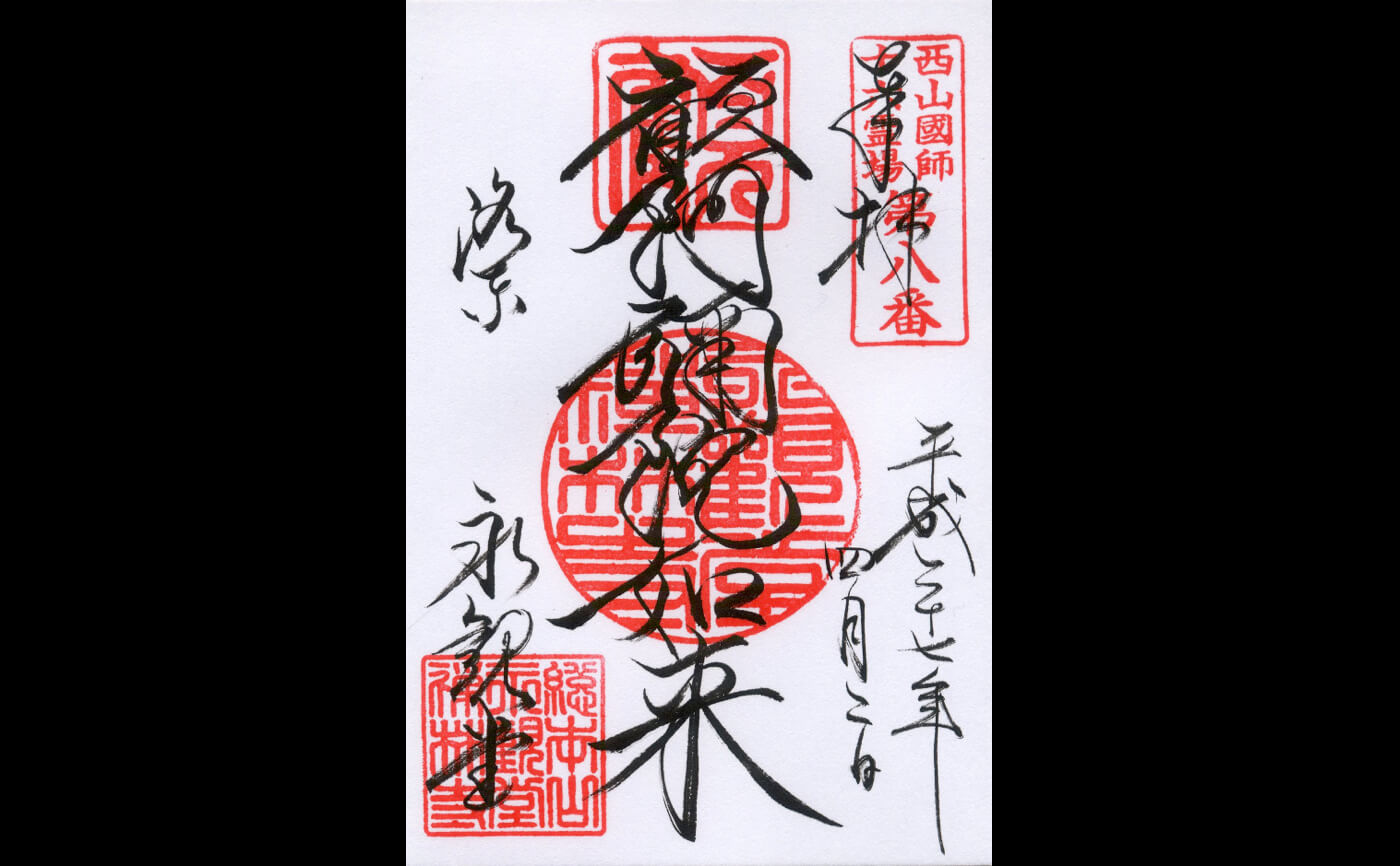
A goshuin is a handwritten seal and inscription that serves as proof of your visit to a shrine or temple. It typically includes the temple or shrine name, the principal deity or Buddha, and the date of your visit, all written in beautiful calligraphy, accompanied by a red stamp. Each goshuin is created by hand, making it a unique and sacred token.
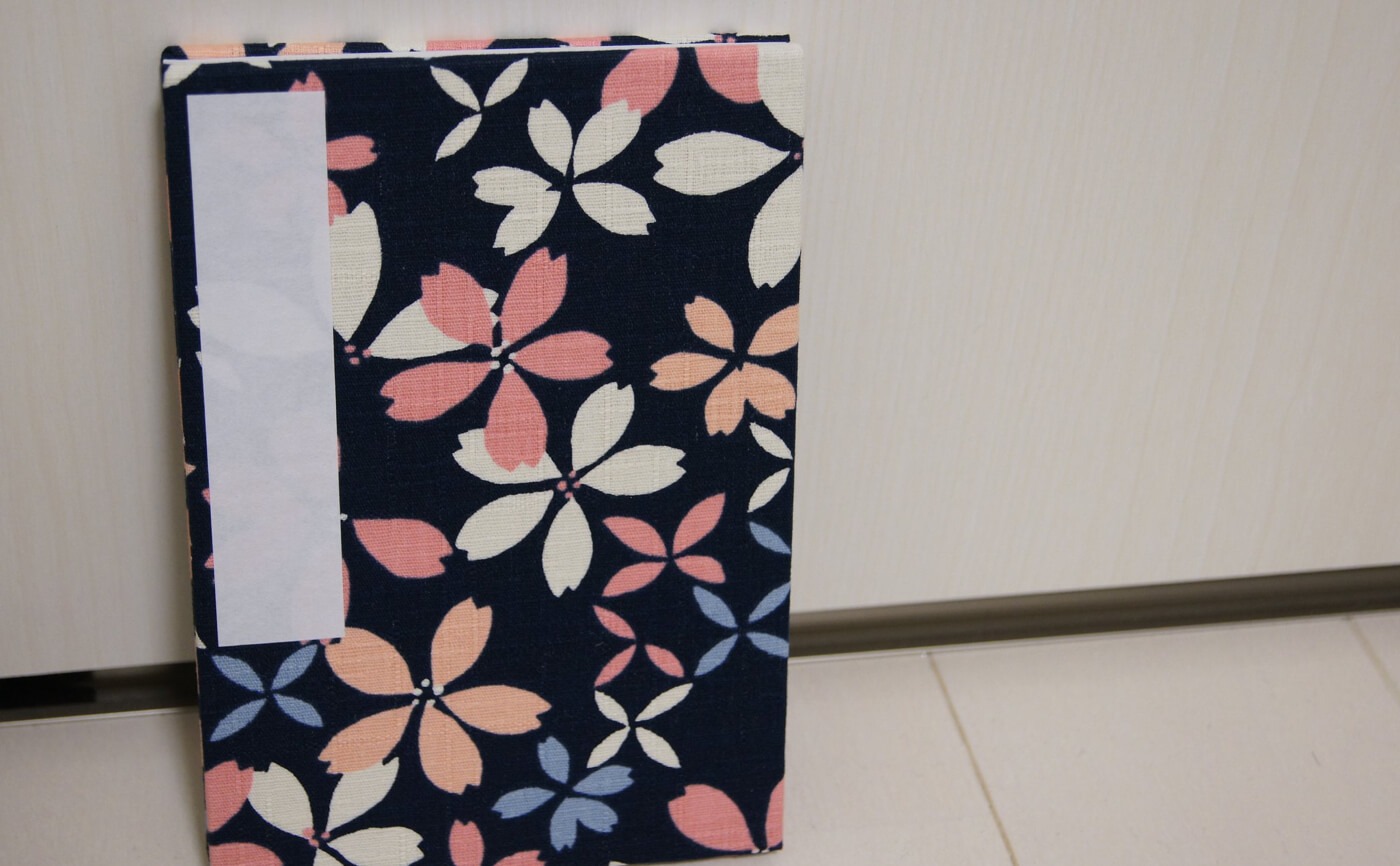
A goshuincho, on the other hand, is a special notebook used to collect and preserve goshuin. These books often come in accordion or traditional Japanese binding styles, and are compact enough to carry during travels. By using a goshuincho, you can record your spiritual journey and create a personal keepsake of your visits.
Religions That Use the Goshuincho (Shrines and Temples)
Goshuin are offered at both Buddhist temples and Shinto shrines, making the goshuincho a cross-religious item. Many people collect both temple and shrine goshuin in the same book. However, some individuals—especially those with strong religious beliefs—prefer to use separate books for shrines and temples, out of respect for their distinct traditions.
While this separation was more common in the past, modern goshuin culture tends to be more relaxed. Today, many enjoy collecting goshuin casually as part of sightseeing or cultural experiences, without strict religious boundaries.
The Goshuincho as a Meaningful Souvenir
Beyond its functional purpose, the goshuincho also holds emotional and commemorative value. Many shrines and temples now offer beautifully designed original goshuincho, which travelers often buy as souvenirs. These designs are often seasonal or exclusive to specific locations, adding to their appeal.
For many people, the goshuincho becomes a personal album of memories, reflecting not only the places visited, but also the emotions and events tied to each journey. As such, the goshuincho serves not just as a spiritual log, but as a treasured record of one’s life and travels.
Who Should Try Using a Goshuincho? The Appeal of Collecting Goshuin
Preserve Your Travel Memories
A goshuincho is more than just a notebook—it’s a way to record your spiritual journey and preserve your travel memories. Each goshuin is handwritten and stamped on-site at the temple or shrine, making it a unique memento of your visit.
Unlike souvenirs or photos, goshuin are tangible proof of the experience itself, given to you in person. For those who love traveling across Japan, a goshuincho becomes a meaningful travel journal filled with personal encounters and sacred spaces.
A Spiritual Experience You Can Feel
Goshuin are not merely decorative stamps or tourist items—they serve as a spiritual token of your prayer and presence at a sacred place. Receiving one after offering a prayer creates a moment of connection with the divine, and many people feel a sense of blessing or peace from the experience.
Whether you’re seeking inner peace, visiting power spots, or making a wish, carrying a goshuincho enhances your journey. It becomes a personalized record of your spiritual path, one that reflects your values, hopes, and growth.
Artistic and Collectible Appeal
Many goshuin and goshuincho are beautifully designed, making them highly collectible items in their own right. From seasonal themes to temple-exclusive designs and character collaborations, there’s a wide variety of artistic options to enjoy.
Some feature elegant Japanese patterns, animal motifs, or gold foil details—each one a piece of craftsmanship. For those who love stationery, journaling, or traditional Japanese aesthetics, goshuincho offer a fun and visually pleasing hobby.
How to Receive a Goshuin: Steps and Etiquette
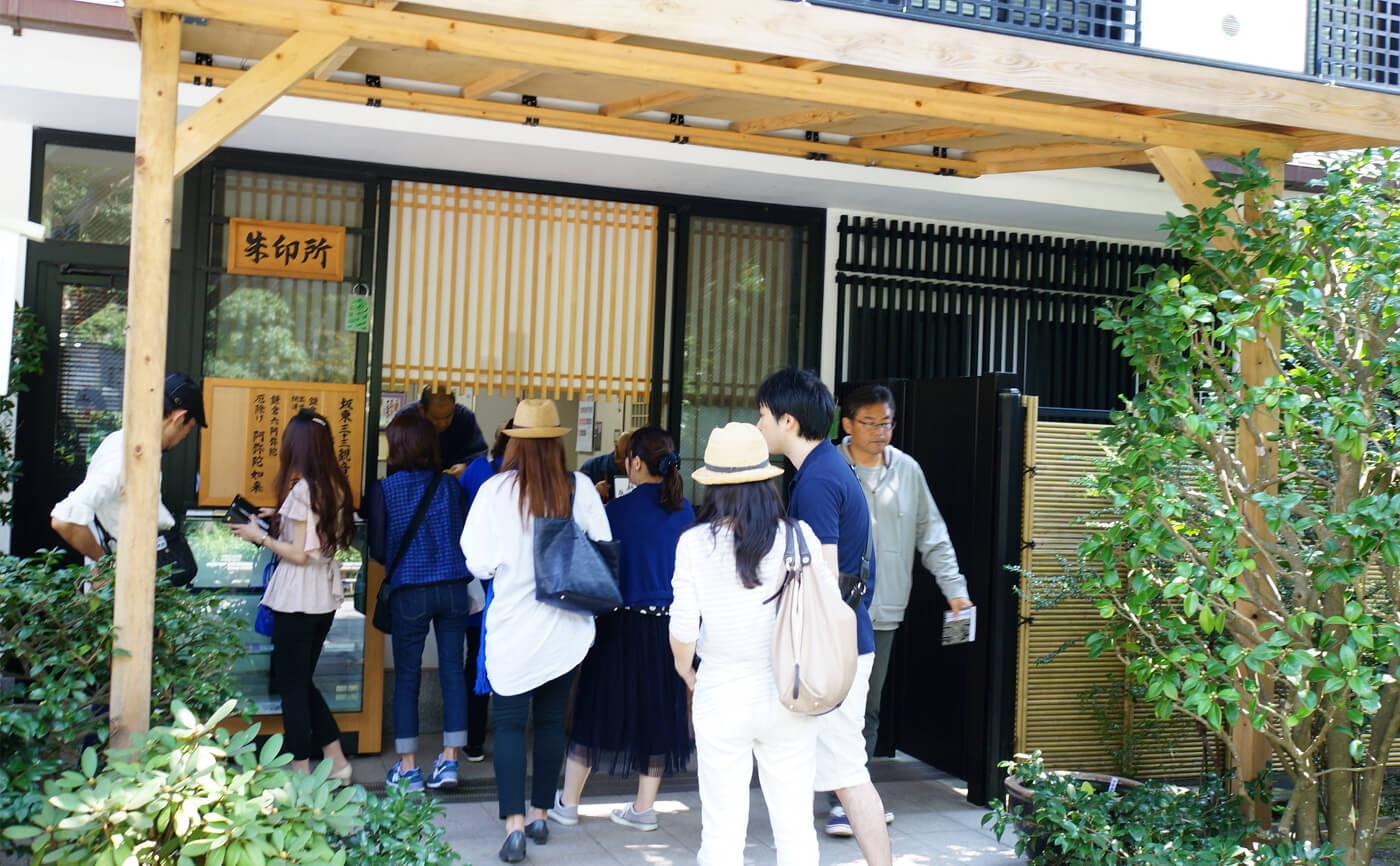
Order of Worship and Proper Mindset
A goshuin is a sacred stamp that serves as proof of your visit and worship. It is essential to pray before requesting a goshuin, as it is not simply a souvenir but a spiritual record of your devotion. Be sure to offer your respects at the shrine or temple with sincerity.
At shrines, follow the traditional ritual of “two bows, two claps, one bow”. At temples, quietly place your hands together in prayer. Observing these customs deepens the spiritual meaning behind the goshuin you receive.
Etiquette When Requesting a Goshuin
Because goshuin are written by hand with care, it’s important to maintain respectful and quiet behavior at the goshuin reception area. Avoid loud conversations and do not take photos without permission. Show appreciation to the staff or priest writing the goshuin.
When making your request, politely say something like “Goshuin onegai shimasu” (May I have a goshuin, please?), and hand over your goshuincho with the cover facing up, without opening it. Wait patiently and thank them with a smile and a “thank you” once it’s done.
Reception Hours and Avoiding Crowds
Most shrines and temples offer goshuin from around 9:00 AM to 4:00 PM, but this can vary by location. Be sure to check official websites or signs at the site beforehand, as some may close earlier or not offer goshuin on certain days.
Popular temples and shrines, especially those with seasonal or limited-edition goshuin, can attract long lines and crowds. To avoid waiting, consider visiting early on weekdays or during non-peak seasons. Thoughtful planning helps ensure a peaceful and meaningful goshuin experience.
Things to Keep in Mind When Using a Goshuincho
How to Handle Prewritten (Kakioki) Goshuin
At some shrines and temples, instead of writing the goshuin directly in your goshuincho, they may offer a prewritten goshuin on a separate sheet of paper, known as a “kakioki goshuin.” This is common during busy periods or when the design is particularly detailed.
When receiving a prewritten goshuin, it’s important to store it carefully using a dedicated mount or a clear pocket folder. If you choose to attach it to your goshuincho, avoid using strong glue that could damage the page—removable adhesive or double-sided tape is recommended. The key is to prevent it from becoming folded, torn, or dirty.
How to Store and Manage Your Goshuincho
Your goshuincho is a sacred record, so it should be handled with care. Avoid exposing it to direct sunlight or moisture, and when carrying it in your bag, use a fabric cover or dedicated pouch to protect it from damage.
If you have multiple goshuincho books, consider organizing them by purpose—for example, one for shrines, another for temples, or by region or event. Writing your name and the collection period on the cover can also help when looking back at your spiritual journey later.
Is It Okay to Mix Shrine and Temple Goshuin? Views by Sect
Today, most people consider it acceptable to collect both shrine and temple goshuin in the same book. However, some people with strong religious beliefs or certain sects may prefer to keep them separate, avoiding what is known as shinbutsu konkō (the blending of Shinto and Buddhism).
If you’re collecting goshuin as a hobby or part of sightseeing, there’s no strict rule—you can decide what works best for you. That said, some religious institutions may recommend separating them, so if you’re unsure, it’s best to follow the specific guidelines of each shrine or temple.
Things You Should Avoid When Collecting Goshuin
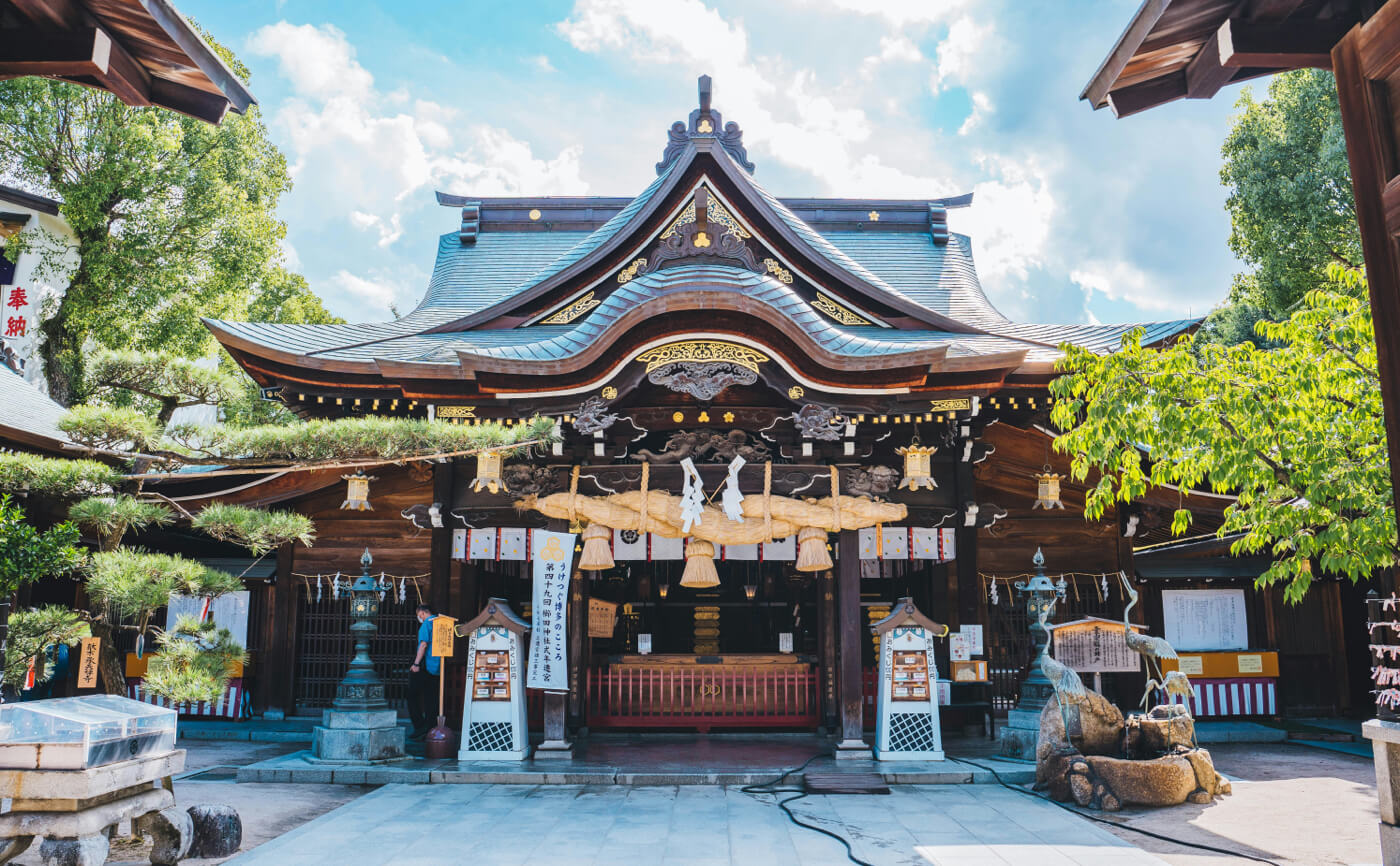
Is It Okay to Treat It Like a Stamp Rally?
Goshuin are not just decorative stamps or collectibles—they are sacred records given as a sign of your worship. While the artistic designs may encourage collecting, it’s important not to approach goshuin as a stamp rally or game.
Requesting goshuin without properly praying first is considered disrespectful. Always remember that a goshuin is a token of your sincere prayer and reverence, not a souvenir to collect mindlessly.
Don’t Ask About the Price
Goshuin are typically given in exchange for a small offering, known as a hatsuhoryō (offering fee), usually ranging from 300 to 500 yen. However, this is not considered a “price” or a transaction.
It is impolite to ask, “How much is it?” or attempt to negotiate. Unless a specific amount is displayed, you should quietly offer the standard fee without questioning it. Think of it as a gesture of appreciation, not a purchase.
Be Mindful When Posting on Social Media
Many people enjoy sharing their goshuin on social media due to their beauty, but there are important considerations. First, goshuin may include personal or religious information, such as names, dates, and signatures. Be cautious and consider blurring or cropping sensitive details if needed.
Additionally, some shrines and temples prohibit photography or online sharing of goshuin. Always check for signage or confirm the temple’s policy beforehand. Show respect for the spiritual nature of the goshuin and share responsibly.
Where Can You Buy a Goshuincho? A Guide to Purchase Locations
Goshuincho can be purchased at a variety of places, including shrines and temples across Japan, as well as stationery shops and online stores. In recent years, a wide range of goshuincho has become available, featuring artistic and limited-edition designs. Depending on where you shop, you’ll find different styles and themes to choose from.
Buying at Shrines and Temples
The most common and recommended way to purchase a goshuincho is directly at a shrine or temple during your visit. Many religious sites offer original goshuincho featuring unique designs inspired by the local area, the enshrined deity, or the temple’s principal image.
Some goshuincho are exclusive to a specific shrine or temple, making them popular as travel souvenirs or as spiritually meaningful items that bring a sense of blessing.
Buying at Stationery or Gift Shops
In recent years, more stationery stores and stylish general goods shops have started selling goshuincho. One benefit is that you can purchase them easily without visiting a shrine or temple—for example, while shopping in your local area.
Commercially available goshuincho often feature elegant washi paper, fabric covers, and carefully crafted designs. They are ideal for people looking for something stylish or unique. Some shops also offer plain goshuincho or customizable options that let you add your name.
Buying Online
A wide variety of goshuincho is also available online through sites like Amazon, Rakuten, and specialty goshuincho stores. The biggest advantage is that you can order from anywhere, anytime, regardless of your location.
Many online stores offer exclusive designs or artist collaborations that can’t be found elsewhere. Since you can read customer reviews, it’s also a good option for first-time buyers who want guidance before choosing.
How to Choose a Goshuincho
Types of Binding
Goshuincho are generally available in two binding styles: the accordion style (jabara-shiki) and the traditional Japanese stitched binding (watoji-shiki).
The accordion style unfolds like an accordion, allowing you to view multiple pages at once. It’s especially convenient for attaching prewritten goshuin (kakioki) and is popular among many users. On the other hand, the stitched binding is a more traditional book format, with each page bound by thread, offering a more classic and sturdy feel.
Choosing the right binding based on your usage style can greatly enhance your goshuin collecting experience.
Material and Paper Quality
When choosing a goshuincho, it’s important to consider not only the design but also the materials and paper quality.
Covers are made from a variety of materials, including fabric, washi paper, and synthetic leather. Each has a different texture, durability, and visual appeal. For those who carry their goshuincho outdoors frequently, a vinyl-covered type may be ideal for its resistance to dirt and moisture.
The inner pages are typically made from washi paper, which is ideal for brush calligraphy. Look for paper that resists ink bleeding and show-through to preserve the clarity and quality of the goshuin. Since thickness and texture vary by product, it’s best to choose a sturdy paper if you plan to keep the book for a long time.
Types and Meanings of Goshuin
Difference Between Standard and Limited Goshuin
Goshuin can generally be categorized into two types: standard goshuin and limited-edition goshuin.
Standard goshuin are available year-round and can be received whenever you visit the shrine or temple. They typically include the name of the temple or shrine, the name of the enshrined deity or Buddha, and the date of your visit, all written in calligraphy with a red seal.
Limited goshuin, on the other hand, are offered only during specific periods, festivals, or seasons. These often feature special designs related to New Year’s, cherry blossom season, or temple anniversaries. Some may include colorful stamps or illustrations, making them popular among collectors for their uniqueness and seasonal charm.
The Elements of Ink Calligraphy and Red Seals
A goshuin typically consists of two main components: ink calligraphy (sumigaki) and red seals (shuin).
The ink calligraphy is handwritten by a priest, monk, or staff member using a brush. It usually includes the name of the shrine or temple, the enshrined deity or principal image, and the date of your visit. Each site has its own calligraphy style, often showcasing elegant and artistic brushwork.
The red seals are stamped using vermilion ink, and commonly display phrases like “Temple Seal of [Name]” or “Shrine Seal of [Name].” Some seals also feature family crests, sacred symbols, or images related to the temple’s history, adding spiritual and cultural depth.
Together, these elements make goshuin not just a religious item, but a unique blend of spirituality, tradition, and Japanese calligraphic art.
Recommended Shrines and Temples for Goshuin Collecting
Shrines and Temples Friendly for Beginners
Easy-to-Access Shrines and Temples in the City
For beginners starting their goshuin journey, visiting shrines and temples in major urban areas is a great first step. In Tokyo, popular and accessible spots include Meiji Shrine (just steps from Harajuku Station), Senso-ji Temple in Asakusa, and Yushima Tenmangu Shrine near Yushima Station.
These sites are conveniently located, with spacious grounds and clear signage, making it easy for first-time visitors to navigate and request goshuin. Many also offer multilingual brochures or signs, making them ideal for international tourists as well.
Spots You Can Enjoy Alongside Sightseeing
If you’re planning a trip, it’s highly recommended to combine goshuin visits with sightseeing. In Kyoto, for example, you can receive goshuin at famous landmarks like Kiyomizu-dera and Fushimi Inari Taisha. In Nara, Todai-ji Temple is another iconic location offering goshuin.
In Kamakura, Tsurugaoka Hachimangu Shrine and Hase-dera Temple are not only known for goshuin, but also for their scenic beauty and nearby attractions like cafés and traditional shops. Goshuin collecting doesn’t have to be formal or rigid—it can be a relaxed and enjoyable part of your travel experience.
Places to Get Unique Goshuin
Animal and Character-Themed Goshuin
In recent years, goshuin featuring animal or character illustrations alongside traditional calligraphy have become increasingly popular. For example, Okadera Temple in Nara offers beautifully designed goshuin with floral motifs in cut-paper (kirie) style, while Mio Shrine in Shiga Prefecture includes a cute rabbit stamp as part of its goshuin. These creative and distinctive designs are drawing attention from visitors across Japan.
Colorful Goshuin
While traditional goshuin are typically created with black ink and red seals, colorful goshuin using multicolored ink, gold and silver foil, or seasonal decorations are now widely available. During spring, you might find designs featuring cherry blossoms, while in autumn, maple leaves often decorate the page.
At Karasumori Shrine in Tokyo, you can receive a vibrant goshuin adorned with multicolored stamps, making it both eye-catching and memorable.
Goshuin Featuring Historical Figures
For history enthusiasts and fans of the samurai era, goshuin inspired by famous warriors and historical figures are a must-see. These goshuin are typically available at shrines or temples associated with those individuals and are often part of a broader historical sightseeing experience.
For example, at Takeda Shrine in Yamanashi Prefecture, you can receive a goshuin honoring Takeda Shingen, while Hachidai Shrine in Kyoto offers one featuring Miyamoto Musashi. These goshuin allow visitors to deepen their understanding of Japanese history while enjoying the cultural beauty of calligraphy and design.
The Goshuincho: A Personal Treasure That Records Prayer and Travel
A goshuincho is not just a notebook or a travel souvenir.
It is a spiritual album that carefully records your journey of faith, memories of travel, and significant moments in your life.
In this guide, we’ve introduced the origins of goshuin, proper etiquette, and tips on how to choose your goshuincho.
But above all, what matters most is to receive goshuin with a heart full of gratitude and respect.
Start by visiting a nearby shrine or temple, and begin nurturing your own goshuincho.
This one-of-a-kind book, which connects faith, culture, and your personal journey, is sure to enrich your travel experiences.
